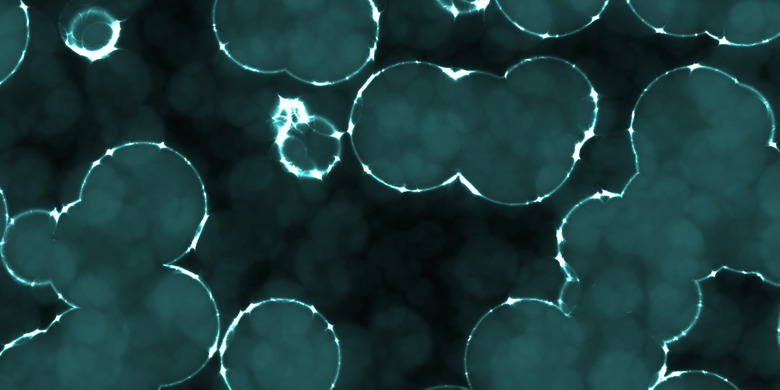Cell Wall Composition Of The Six Kingdoms
Taxonomy is the science of classifying animals, plants and living organisms into categories based on shared features. Scientists currently use the Linnaean taxonomic system, named after Swedish biologist Carolus Linnaeus, to break down organisms into seven major divisions, or taxa, one of which is the kingdom. Kingdoms represent the least specific level. There are six kingdoms: Archaebacteria, Eubacteria, Protista, Fungi, Plantae and Animalia. Organisms are placed in a specific kingdom based upon a variety of factors, including cell wall structure. As the outermost layer of some cells, the cell wall helps maintain cellular shape and chemical equilibrium.
Archaebacteria and Eubacteria
Archaebacteria and Eubacteria
Eubacteria are the type of bacteria with which most people are familiar. They live everywhere, including inside humans and other living organisms. Eubacteria have a semi-rigid cell wall that contains peptidoglycan, a tight-knit molecular complex that prevents bacteria from bursting when water flows into them. A specific group of Eubacteria, called mycoplasmas, are the only bacteria that lack a cell wall. Archaebacteria grow in extreme environments such as hot springs, geysers and oceanic thermal vents. They also have a semi-rigid cell wall, but it is composed of protein or pseudomurein rather than peptidoglycan.
Protista
Protista
Protists include all microscopic organisms that are not bacteria, fungi, plants or animals. Most are single-celled and live in aquatic environments. Protozoa, algae and slime molds are examples of protists. Protozoans, like amoebae, paramecia and trichomonas, are animal-like unicellular organisms. They lack cell walls. Algae are plant-like protists. Many have cell walls that contain intertwined and crisscrossed microfibrils of cellulose, a molecule made up of repeating units of the sugar glucose. Other substances that may be present in algae cell walls include proteinaceous materials, silica, calcium carbonate and polysaccharides. Fungus-like protists may or may not have cell walls. Water molds have cell walls composed of cellulose and glycans. Slime molds possess cellulosic cell walls only during specific life stages.
Fungi
Fungi
Most fungal species are multicellular organisms that live on land rather than in water. Yeast and molds are examples of fungi. Like algae, fungi possess cell walls. Unlike algae cell walls, fungal cell walls contain chitin rather than cellulose. Chitin is a tough, semitransparent and complex molecule made up of repeating units of a sugar called acetylglucosamine. It is better known as the substance that makes up the hard outer coating of crayfish, crabs, lobsters and some insects.
Plantae and Animalia
Plantae and Animalia
The presence of a cell wall is a major characteristic used to distinguish plant cells from animal cells. Plant cell walls prevent enlargement of the plant cell and play important roles in the absorption, secretion and transport of substances within the plant. They consist mainly of intertwined cellulose microfibrils. This cellulose framework is penetrated by an arrangement of non-cellulose molecules. Other substances present in some plant cell walls include lignin, a strong rigid molecule that provides support, and suberin cutin waxes, fatty substances on the outside of plants that prevent water evaporation and plant dehydration. Unlike plants, animal cells lack a cell wall entirely.
Cite This Article
MLA
Ruscitto, Cynthia. "Cell Wall Composition Of The Six Kingdoms" sciencing.com, https://www.sciencing.com/cell-wall-composition-six-kingdoms-8243678/. 11 July 2019.
APA
Ruscitto, Cynthia. (2019, July 11). Cell Wall Composition Of The Six Kingdoms. sciencing.com. Retrieved from https://www.sciencing.com/cell-wall-composition-six-kingdoms-8243678/
Chicago
Ruscitto, Cynthia. Cell Wall Composition Of The Six Kingdoms last modified August 30, 2022. https://www.sciencing.com/cell-wall-composition-six-kingdoms-8243678/
